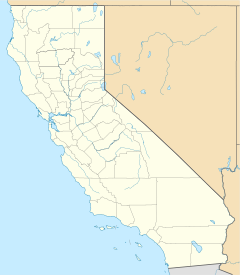
Back مختبر لورانس ليفرمور الوطني Arabic লরেন্স লিভারমোর ন্যাশনাল ল্যাবরেটরী Bengali/Bangla Laboratori Nacional Lawrence de Livermore Catalan Lawrence Livermore National Laboratory Czech Lawrence Livermore National Laboratory Danish Lawrence Livermore National Laboratory German Εθνικό Εργαστήριο Λώρενς στο Λίβερμορ Greek Nacia Laboratorio Lawrence Livermore Esperanto Laboratorio Nacional Lawrence Livermore Spanish Lawrence'i Livermore'i Riiklik Labor Estonian
This article's use of external links may not follow Wikipedia's policies or guidelines. (November 2024) |
 Aerial view of the square LLNL campus (center) from the south. On the south side of LLNL is Sandia National Laboratories and to the north is the neighborhood of Ulmar | |
| Motto | "Science and technology on a mission" |
|---|---|
| Established | September 2, 1952 |
| Research type | Nuclear and basic science |
| Budget | $2.7 billion |
| Director | Kimberly S. Budil |
| Staff | 8,968 |
| Location | Livermore, California, U.S. 37°41′N 121°43′W / 37.69°N 121.71°W |
| Campus | 1 square mile (2.6 km2) |
Operating agency | Lawrence Livermore National Security, LLC |
| Website | llnl.gov |
| Map | |
Lawrence Livermore National Laboratory (LLNL) is a federally funded research and development center in Livermore, California, United States. Originally established in 1952, the laboratory now is sponsored by the United States Department of Energy and administered privately by Lawrence Livermore National Security, LLC.[1]
The lab was originally established as the University of California Radiation Laboratory, Livermore Branch in 1952 in response to the detonation of the Soviet Union's first atomic bomb during the Cold War.[2] It later became autonomous in 1971 and was designated a national laboratory in 1981.[3]
A federally funded research and development center, Lawrence Livermore Lab is primarily funded by the U.S. Department of Energy and it is managed privately and operated by Lawrence Livermore National Security, LLC (a partnership of the University of California, Bechtel, BWX Technologies, Amentum, and Battelle Memorial Institute in affiliation with the Texas A&M University System).[4] In 2012, the synthetic chemical element livermorium (element 116) was named after the laboratory.[5]
The Livermore facility was co-founded by Edward Teller and Ernest Lawrence, then director of the Radiation Laboratory at Berkeley.[6]
- ^ "Master Government List of Federally Funded R&D Centers | NCSES | NSF". nsf.gov. Retrieved March 8, 2023.
- ^ "The 1950s". Lawrence Livermore National Laboratory. Retrieved December 14, 2022.
- ^ "Lawrence Livermore Laboratory". Physics History Network. American Institute of Physics. Retrieved August 4, 2019.
- ^ "LAWRENCE LIVERMORE NATIONAL SECURITY, LLC". llnsllc.com.
- ^ "Livermorium and Flerovium join the periodic table of elements". llnl.gov. Retrieved December 14, 2022.
- ^ "History". Lawrence Livermore National Laboratory. Retrieved January 30, 2020.
